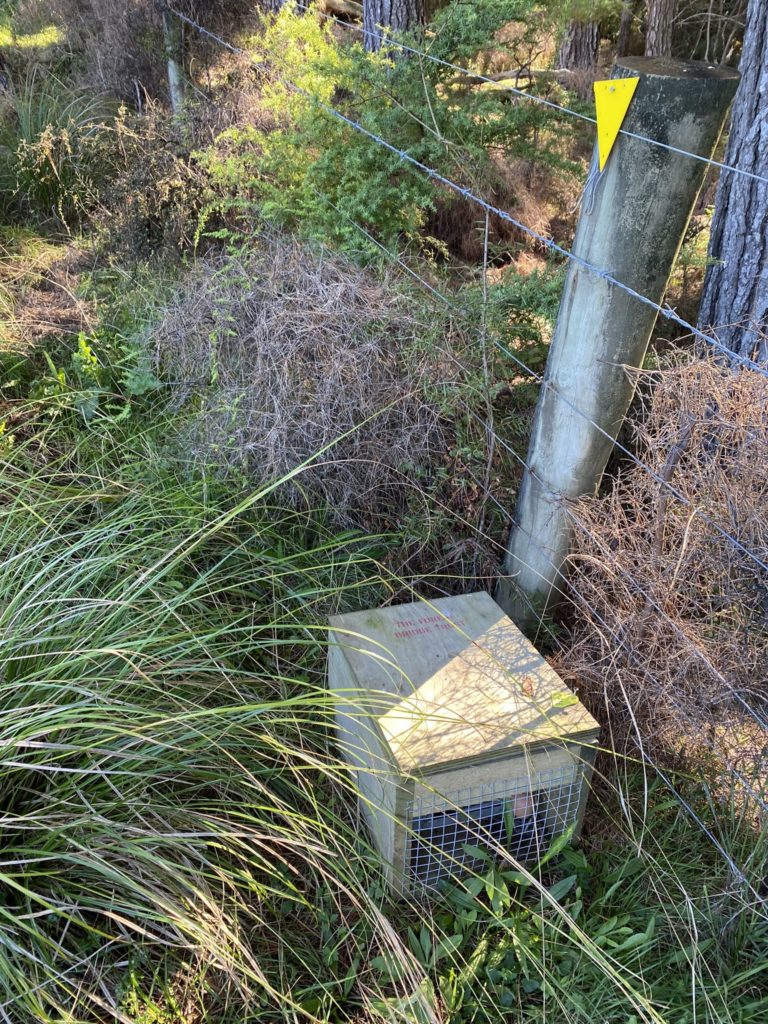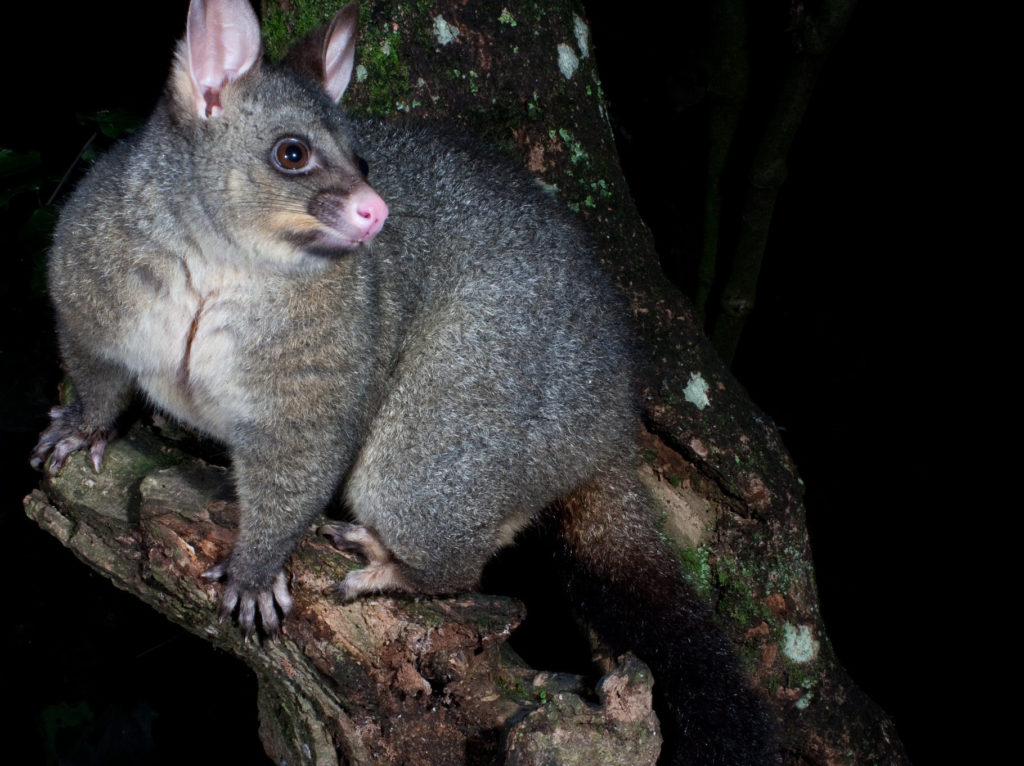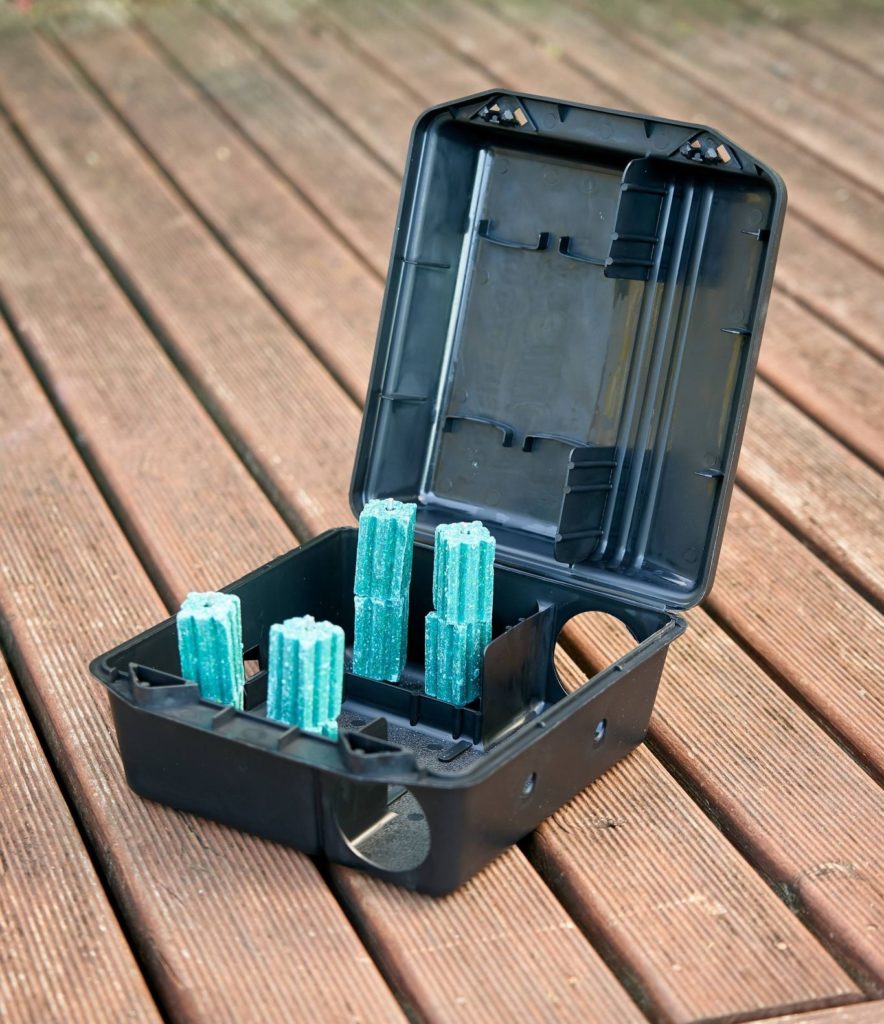ON THIS PAGE
For all traps and bait stations
- Use a minimum of 2 devices (traps and/or bait stations) per acre or 5 per hectare, i.e. on a 10 acre block you will need at least 20 devices. In buildings or sheds, use one device per 20m2.
- Make sure grass is controlled at trap or bait station entrances, at least one metre from the entrances. This reduces moisture which causes the bait to go mouldy and makes access easier for predators. Use glyphosate at the start of each season to save time.
- Scuff the ground around traps during each check to create ‘interest’ for predators.
- Lure the area around each trap or bait station site with scented (peach, vanilla, cinnamon) flour laced with icing sugar, again to increase interest. DO NOT put flour on your devices!
- Pre-feeding at and around trap sites will improve catch rates. Put small bits of tasty lure near your trap to entice the animals.
- A combination of bait types and trapping over time is best practice to avoid predators adapting to your control methods. Traps that predators can see right through increase the catch rate.
- Don’t expect new traps, trap boxes or bait stations to catch immediately after placement. Predators have a natural suspicion towards unfamiliar objects and may take a few days to venture near them

Possum control

Option 1:
- Seasonally night-shoot bush-pasture margins and trees favoured by possums as flowers, buds or fruit come on e.g. pine, willow, larch, and natives (mahoe, cabbage trees, kōwhai).
- Warm nights are best, especially after rain. Follow up with kill traps on a 100–150m grid to get uniform coverage of 1 trap/ha.
- Service and re-bait about every 2–4 weeks, depending on the population.
Option 2:
- If pigs are not present, and there is no stock access, use bait stations 30cm off the ground on a similar 100–150m grid.
- Use Pestoff Brodifacoum possum baits in Philproof ‘mini’ bait stations.
- Pulse 700g of bait initially and then 300g of bait per station every 4 weeks from late winter (August) to early spring (until late October).
- Where there are ‘non target’ species at risk, use 2–3 applications of Feracol or DECAL over the same period, pre-feed with the equivalent non-toxic product for one week before each toxin application. Both of these products will also control rats.
- ’Double Tap’ pellets are a combination of Cholecalciferol and Diphacinone that can also control rats and possums with reduced non target risks.
- Ensure dogs and livestock CAN NOT access any bait.
Rodent control
Traps
- Rodent snap traps in wooden tunnels work well for rodents.
- Locate traps on a 75–100m grid. Set about 100–200mm off the ground on trees in similar grid to snap trap network.
- Lure with peanut butter. Check regularly — every 2–4 weeks.
- Goodnature A24 automatic resetting traps are ideal for rodents. Set about 100–200mm off the ground on trees in similar grid to snap trap network.
- Replace CO2 gas canisters and lure pumps about every 3–4 months.
Bait stations
- During certain times (e.g. mast years) or in places where there are high rodent populations, bait stations may be more effective than traps.
- The same network of bait stations as for possums can be used, but extra stations (or traps) may be required to reduce device spacing to 50–75m.
- Pulse with Pindone pellets, Ditrac, Contrac or Pestoff (blocks or pellets) monthly, from August to November.
- ‘Double Tap’ pellets are a combination of Cholecalciferol and Diphacinone that can also control rats and possums with reduced non target risks

Note: Possums can eat large amounts of Pindone pellets. If you have a CSL (Controlled Substance Licence), then Feratox (encapsulated cyanide) is a good product to reduce this, or place possum traps at bait station sites
Mustelid control
- Use DOC 200 wooden box traps with enlarged openings (4×4 mesh squares) to target weasels, stoats and ferrets. Larger entrances will catch more pests, so consider non-targets in your local environment.
- Place away from stock access at 100–150m intervals along the inside of bush block fences, on game trails, and along stream edges within bush areas.
- For bush areas <10ha no internal traps will be required as stoats will be within 200m of a trap.
- Rebait about every 2 weeks with eggs (in spring), fresh rabbit (in winter), or Erayz rabbit blocks/paste (a long- life product) in warmer climates. Rebait less in winter and more in spring/summer.
- DOC 200 traps also catch rats and hedgehogs.
- Modifications might be required if kiwi, weka or other non target species are present.
- Ensure DOC 200 entrance holes have no rough ’sprags’. File until smooth or fold mesh rather than cutting
For more information
For more information on predator control specific to your area, we recommend that you contact a predator control expert, your regional council or local DOC office.
For information on what you can do to take your trapping to the next level, download a Predator Control Annual Calendar (PDF, 102KB) or buy an A2 print from our shop.

